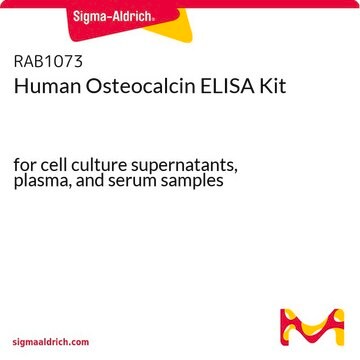SCR004
Alkaline Phosphatase Detection Kit
This Alkaline Phosphatase Detection Kit is a specific & sensitive tool for the phenotypic assessment of Embryonic Stem (ES) cell differentiation by the determination of AP activity.
Synonym(s):
ALP Stain, Alkaline Phosphtase Stem Cell Staining Kit, Stem Cell AP Staining Kit
About This Item
Recommended Products
Quality Level
species reactivity (predicted by homology)
mammals
manufacturer/tradename
Chemicon®
technique(s)
cell culture | stem cell: suitable
input
sample type cardiac stem cell(s)
sample type: mouse embryonic stem cell(s)
sample type hematopoietic stem cell(s)
sample type induced pluripotent stem cell(s)
sample type neural stem cell(s)
sample type epithelial cells
sample type pancreatic stem cell(s)
sample type mesenchymal stem cell(s)
sample type: human embryonic stem cell(s)
shipped in
wet ice
Related Categories
General description
Application
Millipore′s Alkaline Phosphatase Detection Kit (Catalog number SCR004) is a specific and sensitive tool for the phenotypic assessment of ES cell differentiation by the determination of AP activity.
Available separately from Millipore are the monoclonal antibodies TRA-2-49 (Catalog Number MAB4349) and TRA-2-54 (Catalog Number MAB4354), which permit the detection of Liver / Bone / Kidney isozyme of AP as expressed by ES cells. When used in flow cytometry, these reagents permit a quantitative assessment of AP expression by ES cells [7].
For Research Use Only; Not for use in diagnostic procedures
Stem Cell Research
Components
Napthol AS-BI phosphate solution (4mg/mL) in AMPD buffer (2mol/L), pH 9.5 (Part No. 90234). One 15mL bottle.
Storage and Stability
When stored at 2-8º C, the kit components are stable up to the expiration date. Do not freeze or expose to elevated temperatures. Discard any remaining reagents after the expiration date.
Legal Information
Disclaimer
Signal Word
Warning
Hazard Statements
Precautionary Statements
Hazard Classifications
Carc. 2 - Eye Irrit. 2 - Skin Irrit. 2
Storage Class Code
10 - Combustible liquids
Certificates of Analysis (COA)
Search for Certificates of Analysis (COA) by entering the products Lot/Batch Number. Lot and Batch Numbers can be found on a product’s label following the words ‘Lot’ or ‘Batch’.
Already Own This Product?
Find documentation for the products that you have recently purchased in the Document Library.
Customers Also Viewed
Articles
Read types of stem cells including multipotent stem cells, Pluripotent stem cells and iPSCs and their applications in basic stem cell research, stem cell therapy and disease modelling
Protocols
Step-by-step stem cell culture protocols for human induced pluripotent stem cells (iPSCs) including ips cell thawing, expanding, freezing and characterizing.
This page covers the indirect co-culture of embryonic stem cells with embryonic fibroblasts.
Our team of scientists has experience in all areas of research including Life Science, Material Science, Chemical Synthesis, Chromatography, Analytical and many others.
Contact Technical Service












